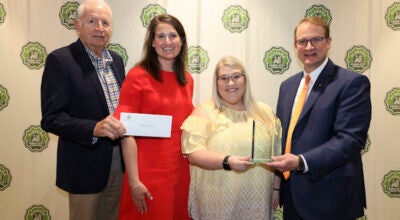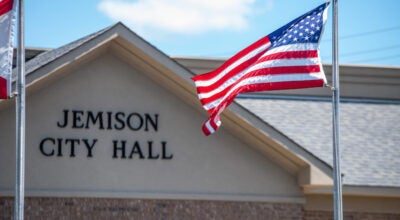Growers learn about peach crop
Published 11:10 pm Tuesday, February 2, 2010
The technical aspects of agriculture can be intimidating to beginners.
For this reason, Tuesday’s annual Chilton Area Peach Production Meeting was preceded by a two-hour course on the basics of peach production.
Experts spoke on various subjects, such as site selection for new orchards, planting methods, pruning techniques, peach variety selection, disease control, pest management and more.
“Just like raising young ones, peach trees have to be trained,” Extension Agent Gary Gray said.
Pruning stimulates lateral growth in trees, Gray explained.
Young trees are thinned down to about four primary branches. These branches grow best at an angle of about 45 degrees.
Mature tress are also regularly thinned to stimulate growth.
“The basic idea is not to prune in the fall,” Gray said. “Spring pruned orchards aren’t stressed as much, so they tend to live longer.”
Gray also talked about weed control, fertilizers and the benefits of irrigation.
He encouraged new growers to consider irrigation, recalling the destructive drought of 1997.
Next, Chilton Research and Extension Center Superintendent Jim Pitts addressed peach varieties. Different varieties require different amounts of chill hours, or hours spent each winter in near-freezing or freezing temperatures.
The preferred varieties for Central Alabama require from 550 to 1,000 chill hours, Pitts said.
He warned that most varieties from California are susceptible to bacterial spot. Others are O’Henry and several “Prince” varieties.
“The fruit (with bacterial spot) is edible. You can eat it, but it’s not pretty,” Pitts said.
Appearance means a lot in the world of peaches. Most breeders emphasize “round” and “red” as what to look for in an aesthetically pleasing peach. The peach should also have short “fuzz” and be relatively smooth.
Of course, taste is also important. The best tasting peaches ripen from mid-June to August in Central Alabama. Free stone peaches, which grow apart from the pit, fall into the same category.
“Those are what people come here for, the free stones,” Pitts said.
When talking about freeze protection, Pitts said peach buds are most in danger in temperatures of 28 degrees and below when the buds are in “shuck off” stage, or the fruit has started to shed its calyx or shuck.
“It will kill them,” he said.
Assistant Superintendent Matthew Price spoke on sprayer calibration and the importance of not using too little or too much spray material per acre in peach orchards.
Horticulturalist Bobby Boozer went over production basics, and finally Dr. Guido Schnabel, a fruit pathologist from Clemson University, reviewed disease prevention and pest management options.
In the following meeting, growers learned about the latest innovations in the field.
The meeting was sponsored by the Chilton County Farmers Federation, the Clanton Lions Club and the Alabama Fruit and Vegetable Growers Association.
For more information on peach production, call the extension office at 280-6268 or the Chilton Research and Extension Center at 646-3610.






